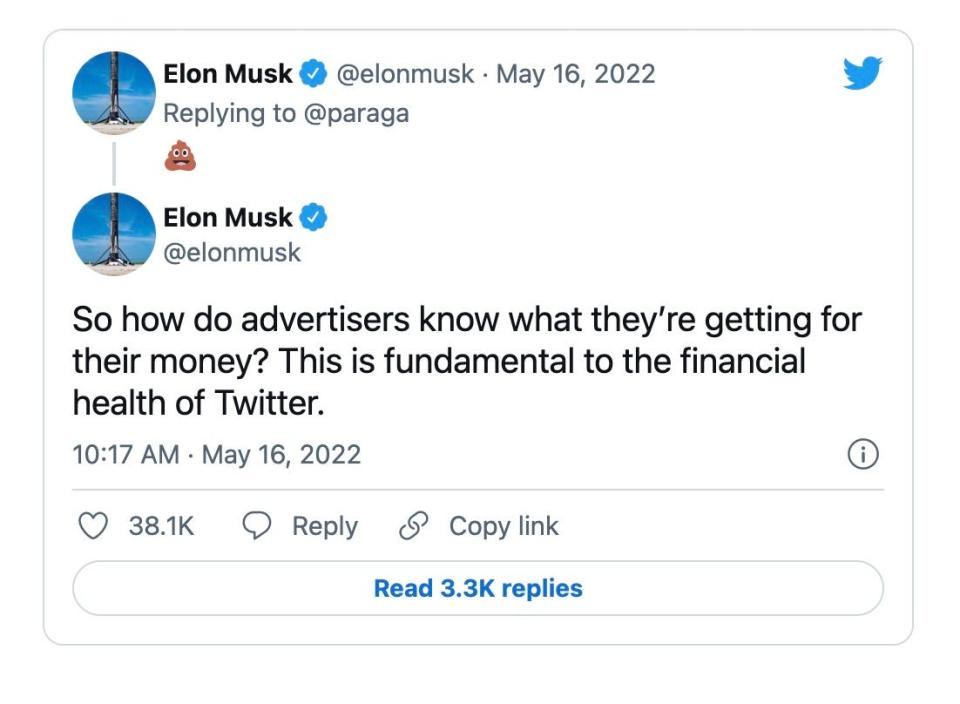Bots: What are they and how could they mess up Elon Musk's $44 billion Twitter deal?
Any minute now, the world’s richest man will either buy Twitter, tweet a poop emoji to the social media’s current CEO (yes, that really happened) or bring up the issue of a user-base bot count one more time.
Really, with Tesla CEO Elon Musk, it’s a toss-up as to what will happen next in the latest chapter of what’s been an unusual takeover bid by an unusual man who makes daily headlines with his often – you guessed it – unusual behavior.
Musk’s obsession with Twitter’s bot count – Twitter says it makes up about 5% of its “monetizable daily active users worldwide” while Musk contends it’s more like 20% or higher – is fascinating. I mean, why does he care so much about it and should we?

Bot basics
The short answer is yes, nefarious fake accounts on Twitter – and all social media – matter – a lot. They have the power to skew elections, spread dangerous misinformation and exacerbate conflict. But that’s not likely what Musk cares about.
Twitter execs say the company has approximately 229 million monetizable daily active users worldwide. That "monetizable" thing is mainly where Musk takes issue with Twitter's math and why he might ultimately walk away from his $44 billion offer to buy the social network. After all, buying a social network means buying the users and since bots don't click ads or make purchases, they don't count.
But Twitter’s bot problem is nothing new. Musk has been complaining about them for years. A fake account pretending to be him scammed several of his followers out of crypto cash in 2018. He even used getting rid of the bots as a reason to take over the company tweeting in late April, “If our twitter bid succeeds, we will defeat the spam bots or die trying!”
Hold up: Musk says Twitter deal 'temporarily on hold' over estimates of spam accounts
A bot by any other name
So what exactly is a bot? In simple terms, it's an automated software program that performs specific tasks or actions on behalf of a user. That user could be another person or it could be a company or organization. Bots are most commonly used for two purposes: marketing and spam. They're the kind of accounts many people block as soon as they see them, but not all of them are obvious.
Twitter bots can do all sorts of things, from automatically following people who follow you, to retweeting content, to sending direct messages. They can generate fake likes and fake followers and they can create artificial trends. In short, bots can be used to game the system, which Twitter has long insisted it’s working hard to combat.
One step forward? Musk’s $44 billion Twitter takeover deal gets board endorsement
Not all bots are bad
Bots can be annoying, but not all of them are bad. For example, some bots help or bots that can help you relax. Some bots can keep you up to date on the latest news and bots can even remind you of important dates and times.
The problem is that while good bots exist, most automated Twitter accounts do little more than spam the timeline with ads, misinformation, or sketchy links that can lead to malware and other cybersecurity threats. That's why it's so important to know how to spot a bot and why you should be careful about interacting with any account that may be one.

 Yahoo Autos
Yahoo Autos 